A Guide on How to Read an Insulin Syringe
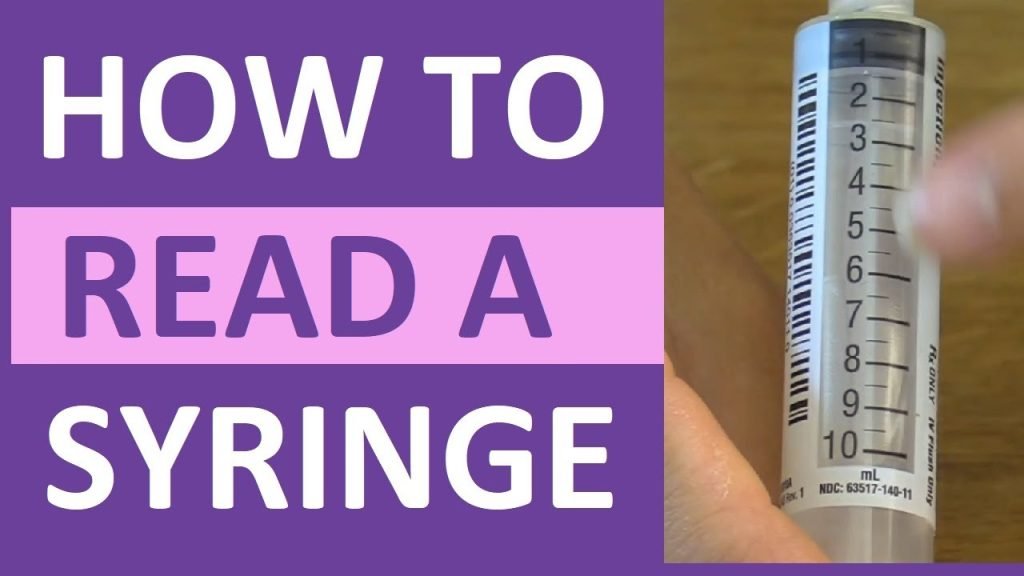
Administering insulin correctly is crucial for effective diabetes management. Understanding how to read an insulin syringe ensures you or your loved ones receive the correct dosage. This comprehensive guide will help you navigate the different insulin syringe sizes, needle gauges, and units to milliliters conversion. Understanding Insulin Syringe Sizes Insulin syringes come in various sizes, and choosing the right one depends on the prescribed dose of insulin. Here are the common sizes: Knowing these sizes helps ensure accurate dosing and minimal discomfort during injections. Insulin Syringe Needle Sizes Insulin syringes also vary by needle size, measured in both gauge (thickness) and length. Common needle sizes include: Refer to an insulin syringe needle sizes chart for detailed information on available options. How to Read an Insulin Syringe Units and Milliliters Conversion Insulin syringes are marked in units, not milliliters (ml). However, knowing the conversion is essential: Markings on the Syringe Examples of Reading an Insulin Syringe Specifics on Needle Gauges and Sizes Insulin Needle Gauge Size Chart Needle gauge affects the comfort and ease of insulin administration. A gauge size chart can help you select the appropriate thickness: Diabetic Needle Sizes Practical Tips for Using Insulin Syringes Conclusion Accurate insulin administration is vital for effective diabetes management. By understanding how to read an insulin syringe and choosing the appropriate insulin syringe sizes and needle gauges, you can ensure proper dosing. Always consult with your healthcare provider for personalized advice and guidance on insulin injections. Key Takeaways By following these guidelines, you can manage your diabetes effectively and with confidence. When to take Celebrex morning or night?
Diabetes and Skin Conditions: Understanding the Connection

At InsulinReview, we strive to provide comprehensive insights into the various aspects of diabetes management. One often overlooked aspect is the relationship between diabetes and skin conditions. Diabetes can lead to a variety of skin issues, which can range from mildly irritating to severely impactful. This article delves into the common skin conditions associated with diabetes and offers guidance on managing them. Diabetic Skin Conditions Diabetic skin conditions are diverse and can affect individuals in different ways. Common issues include bacterial and fungal infections, itching, and dry skin. High blood sugar levels can cause poor blood circulation and damage to nerves, which often contribute to these skin problems. Regular monitoring and maintaining blood sugar levels within the target range can help prevent and manage these conditions. Diabetic Dermopathy Diabetic dermopathy is one of the most common skin conditions seen in people with diabetes. It appears as light brown, scaly patches on the skin, often on the shins. These patches are usually harmless and do not require treatment. However, they are indicative of underlying diabetes and poor blood flow. Keeping blood glucose levels under control and moisturizing the affected areas can help manage this condition. Mottled Skin on Leg Mottled skin on leg can be a sign of poor circulation, which is a common complication of diabetes. This condition, known as livedo reticularis, causes a lace-like purplish discoloration of the skin. It’s important for individuals with diabetes to regularly check their legs and feet for changes in color and texture, as these can indicate underlying issues. Improving blood circulation through exercise, proper diet, and medication can help alleviate this condition. Diabetes and Yeast Infections Diabetes and yeast infections are closely linked. High blood sugar levels create an environment that is conducive to the growth of yeast, particularly Candida. This can lead to infections in various areas of the body, including the mouth, genitals, and skin folds. Common symptoms include itching, redness, and discomfort. Diabetes yeast infection can be managed by maintaining good blood sugar control, practicing good hygiene, and using antifungal medications as prescribed by a healthcare provider. It’s important for individuals with diabetes to be aware of the signs of yeast infections and seek treatment promptly to prevent complications. Managing Diabetic Skin Conditions Key Takeaways Conclusion Understanding the connection between diabetes and skin conditions is essential for comprehensive diabetes management. At InsulinReview, we are committed to providing detailed and accurate information to help individuals manage their diabetes effectively. By maintaining good blood sugar control, practicing good hygiene, and staying vigilant about skin changes, individuals with diabetes can minimize the impact of these skin conditions on their overall health and quality of life. For more expert reviews and information on managing diabetes, visit InsulinReview, your trusted source for diabetes care insights.
Optimizing Insulin Storage and Transportation: Best Practices for Maintaining Medication Efficacy
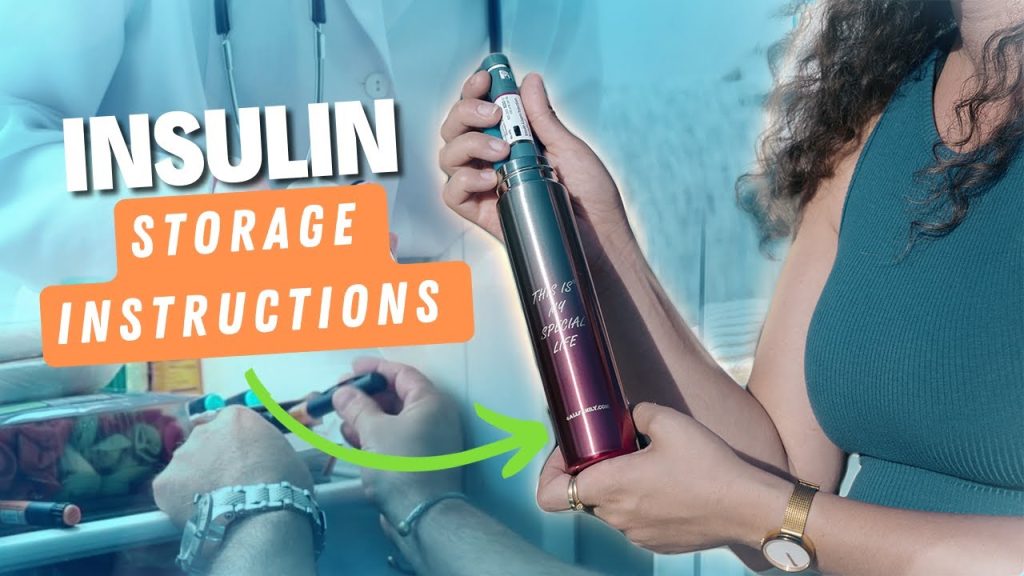
Insulin, a vital medication for individuals with diabetes, requires proper storage and transportation to ensure its effectiveness. Understanding the nuances of insulin storage and transportation is crucial for maintaining medication efficacy and patient safety. In this article, we will delve into essential considerations and best practices for handling insulin to maximize its shelf life and potency. Does Insulin Need to be Refrigerated? One of the most common questions regarding insulin storage is whether it needs refrigeration. While most insulin formulations should be refrigerated to maintain stability, certain types, such as unopened vials or pens, can be stored at room temperature for a limited period. However, once opened, insulin generally needs refrigeration to prevent degradation. Insulin Storage Temperature Insulin should be stored within a specific temperature range to ensure its potency. The recommended storage temperature for most insulin products is between 36°F and 46°F (2°C and 8°C). It is crucial to avoid freezing insulin or exposing it to extreme heat, as both can compromise its effectiveness. Expired Insulin Using expired insulin can pose risks to patient health, as it may not provide the expected blood glucose control. Insulin should be checked regularly for expiration dates, and expired insulin should be discarded following proper disposal guidelines. Transporting Insulin Transporting insulin, especially when traveling or shipping, requires careful attention to temperature control. Insulin that needs refrigeration should be stored in insulated containers with ice packs to maintain the required temperature during transit. It is essential to avoid prolonged exposure to extreme temperatures and ensure timely delivery to prevent potential degradation. Insulin Shelf Life The shelf life of insulin varies depending on the formulation and storage conditions. Unopened insulin vials or pens typically have a longer shelf life, ranging from one to two years when stored in the refrigerator. Once opened, insulin should be used within a specified timeframe, usually ranging from 28 to 30 days, to maintain potency. Best Practices for Insulin Storage and Transportation To optimize insulin storage and transportation, consider the following best practices: Conclusion In conclusion, proper insulin storage and transportation are essential for maintaining medication efficacy and ensuring patient safety. By following best practices and guidelines, individuals can safeguard their insulin supply and effectively manage their diabetes. Always consult with a healthcare professional for personalized guidance on insulin storage and usage.
Lantus and price: Reducing long-term drug costs and more
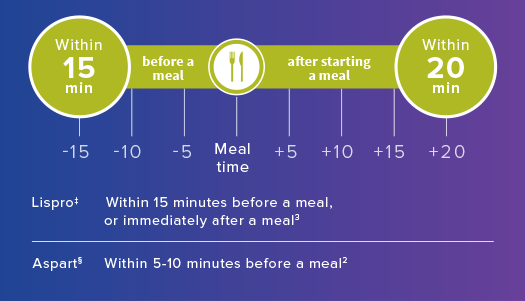
What are the side effects of Lantus (Insulin glargine)? While Lantus provides essential benefits in managing diabetes, it may also lead to certain side effects. The common side effects include weight gain, mild rash or itching at the injection site, and low blood sugar (hypoglycemia). Symptoms of hypoglycemia include sweating, shaking, rapid heartbeat, hunger, blurred vision, and tingling hands or feet. However, these side effects usually lighten up as your body adjusts to the medication. All medicines can have side effects and these can vary from person to person. Therefore, it’s crucial to discuss any concerns or health conditions with the healthcare provider to prevent or manage side effects effectively. If you are pregnant, planning to become pregnant, or nursing a baby, inform your doctor or pharmacist before using Lantus as it may have implications. Infections or diseases Additionally, diabetes itself weakens the immune system, increasing the likelihood of infections or diseases. It is also important to rotate the injection site with each dose. Healthcare professionals usually recommend a patient to switch between injecting in the abdomen, thighs, or upper arms. Another potential risk is allergic reactions. Although rare, some individuals may have an allergic reaction to Lantus. Serious Side Effects It is crucial for patients starting a new medication to understand not only its benefits but also its potential side effects. Lantus, a long-acting insulin used to control blood sugar levels in people with diabetes, is no exception. Midway into our review, our attention is drawn to the insulin glargine warnings related to this drug. Common Side Effects Alongside the serious side effects, Lantus has side effects that are common among most users. These include reactions at the injection site such as redness, swelling, or itching. While these are typically mild, they should be reported to a healthcare professional if they persist or worsen. Another common side effect is weight gain, which is a usual concern for many diabetes patients. Keeping a balanced diet and regular exercise routine can help in managing this. Pros and Cons of Insulin glargine (Lantus) There are several types of insulin available, and they work in different ways to manage blood sugar. One such type is insulin glargine lantus. As with any medication, it is essential to thoroughly review its pros and cons before deciding on its use. It’s worth noting that the effectiveness of insulin glargine can vary between individuals based on several factors, such as their overall health status and lifestyle. One of the significant benefits of utilizing insulin glargine Lantus is its ability to provide long-lasting, stable blood sugar control. Compared to other forms of insulin, glargine has a relatively longer duration of action that lasts nearly 24 hours. This means that it can be administered once daily, easing the management of diabetes, especially for individuals who may find multiple insulin injections burdensome. Cost of Generic Insulin glargine (Lantus) While insulin glargine Lantus does offer substantial benefits, there are certain hindrances to its usage. One of these challenges pertains to the glargine cost. Compared to other types of insulin, Lantus tends to be more expensive, which may impede accessibility for some patients. However, to mitigate this, some healthcare providers may offer patient assistance programs or encourage the use of generic glargine products that can help reduce the overall cost. What are the risks and warnings for Insulin glargine (Lantus)? Like other medications, Lantus presents potential risks and warnings that users should be aware of. Understanding these can help you make an informed decision with your healthcare provider to determine if Lantus is the right medicine for your needs. It is important to know that Lantus can sometimes cause hypoglycemia, a condition where your blood sugar levels can get too low. Symptoms can include shakiness, sweating, fast heartbeat, and blurred vision. To prevent this, it’s necessary always to monitor your blood sugar levels and follow your healthcare provider’s instructions about diet, exercise, and insulin dosage. Lantus Review: Patient Feedback and Experience Most patients have positively reviewed Lantus, appreciating its once-a-day administration convenience. Some have also reported significant improvements in their HbA1c levels, reduced blood sugar variability, and fewer episodes of hypoglycemia compared to other long-acting insulins. However, like any medication, individuals’ experiences with Lantus may differ.
Buy Ozempic from Canada & SAVE
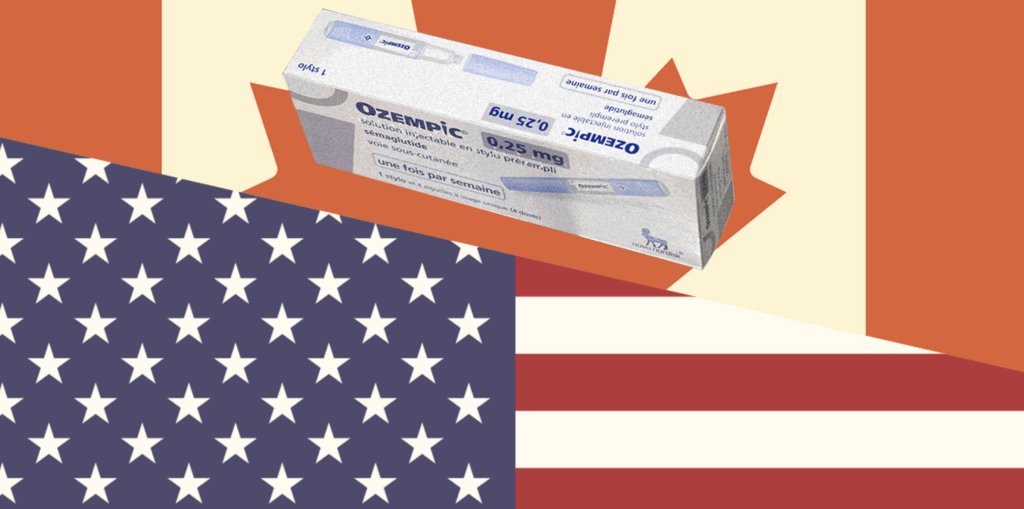
Are you looking to purchase Ozempic from Canada? You’re in the right place! In this comprehensive blog post, we’ll delve into the experiences and insights of users regarding this medication, focusing on its uses, side effects, dosage, and alternatives. Whether you’re seeking information on where to buy Ozempic, how to get it online, or understanding its effectiveness, we’ve got you covered. Have a prescription? Buy Ozempic from Canada and enjoy a host of benefits, including: USA Patients: Buy Ozempic for a Lower Price For patients in the USA, buying Ozempic from Canada can offer significant cost savings compared to purchasing it domestically. With the rising costs of healthcare, exploring international options for prescription medications can help you manage your diabetes more affordably. FREQUENTLY ASKED QUESTIONS What does Ozempic cost in Canada? The cost of Ozempic in Canada may vary depending on factors such as dosage strength, quantity, and pharmacy location. However, purchasing Ozempic from Canadian pharmacies may offer cost savings compared to buying it in other countries. Is Ozempic an insulin? No, Ozempic is not insulin. It belongs to a class of drugs called GLP-1 receptor agonists, which work by stimulating insulin release and reducing glucagon secretion, leading to lower blood sugar levels. Is Ozempic available in pill form? No, Ozempic is only available as a solution for injection. It is administered via pre-filled injection pens and should not be taken orally. How long does it take for Ozempic to start working? Ozempic starts working gradually after the first dose, with noticeable improvements in blood sugar control over time. It may take several weeks to reach its full therapeutic effect. Does Ozempic cause weight loss? Yes, Ozempic has been shown to promote weight loss in some patients, particularly when used in conjunction with diet and exercise. However, individual results may vary. What is the best location on the body to inject Ozempic? Ozempic can be injected into the abdomen, thigh, or upper arm. Rotate injection sites with each dose to minimize the risk of injection site reactions. Is Ozempic safe during pregnancy? No, Ozempic should not be used during pregnancy due to the potential risk of fetal harm. Women of childbearing potential should use effective contraception while taking Ozempic and should discontinue treatment if pregnancy occurs. Do I have to take Ozempic (Semaglutide) with food? No, Ozempic can be taken with or without food. However, taking it at the same time each week can help establish a routine and improve adherence to treatment. How long does Ozempic stay in your system? Ozempic has a long elimination half-life of approximately one week, meaning it remains in your system for an extended period after each dose. Can Ozempic and Metformin Be Taken Together? Yes, Ozempic and metformin can be taken together as part of a comprehensive treatment regimen for type 2 diabetes. They work by different mechanisms to improve blood sugar control and may be used in combination for enhanced efficacy. Are any Ozempic coupons available? Yes, some pharmacies may offer coupons, discounts, or patient assistance programs to help reduce the cost of Ozempic for eligible patients. Check with your healthcare provider or pharmacist for information on available savings options. Сonclusion Ozempic is a valuable medication for managing type 2 diabetes, offering effective blood sugar control and potential weight loss benefits. By providing comprehensive information on its uses, side effects, dosage, and alternatives, we aim to empower readers to make informed decisions about their diabetes management. Whether you’re considering purchasing Ozempic from Canada or exploring other treatment options, understanding its potential benefits and risks is essential for optimizing your health and well-being. For more information on Ozempic or to purchase it from Canada, consult your healthcare provider or pharmacist. They can provide personalized guidance based on your individual needs and help you navigate the process of obtaining this medication safely and affordably. Remember to follow your healthcare provider’s recommendations and monitor your blood sugar levels regularly to achieve optimal diabetes management.
Can I Buy Ozempic from Mexico? Understanding Purchasing Options and Proper Storage

In our comprehensive blog post about Ozempic, we delve into users’ experiences and insights regarding this medication, focusing on its uses, side effects, dosage, and alternatives. Beginning with an overview of its uses, readers will gain an understanding of why Ozempic is prescribed and its effectiveness in managing specific conditions, particularly for individuals with diabetes. We’ll explore why this product is often considered a treatment option, shedding light on its mechanism of action and potential benefits. What is Ozempic? Ozempic is a prescription medication used to improve blood sugar control in adults with type 2 diabetes. It belongs to a class of drugs called glucagon-like peptide-1 (GLP-1) receptor agonists, which work by stimulating the release of insulin and decreasing the production of glucagon in the body. This helps to lower blood sugar levels and may also promote weight loss. How is Ozempic Provided by the Pharmacy? Ozempic is typically provided in a pre-filled injection pen, making it convenient and easy to use. The pen contains a specific dose of medication, and users can administer it themselves at home after receiving proper instructions from their healthcare provider. The Importance of Properly Storing Medications Proper storage of medications, including Ozempic, is essential to maintain their effectiveness and safety. While some medications need to be refrigerated to remain stable, others can be stored at room temperature. Understanding how to store Ozempic correctly is crucial for ensuring its potency and efficacy. Does Ozempic Need to be Refrigerated? Yes, Ozempic should be refrigerated at all times to maintain its stability and effectiveness. Storing Ozempic in the refrigerator helps prevent degradation of the medication and ensures that each dose retains its potency. It is important to follow the manufacturer’s instructions and store Ozempic in the refrigerator until ready for use. Will Ozempic Work if it is Not Refrigerated? Storing Ozempic at room temperature or exposing it to high temperatures can affect its potency and effectiveness. If Ozempic is not refrigerated as directed, it may not work as intended and could potentially lead to inadequate blood sugar control. It is crucial to follow proper storage guidelines to ensure the medication remains effective. Frequently Asked Questions: What if my Ozempic is delivered warm? If your Ozempic is delivered warm, it may have been exposed to temperatures outside the recommended range for storage. Contact your pharmacy or healthcare provider immediately to discuss the situation. They can provide guidance on whether the medication is still safe to use or if a replacement dose is necessary. How do I know if Ozempic has gone bad? Ozempic should appear clear and colorless in the pre-filled injection pen. If you notice any discoloration, cloudiness, or particles in the solution, it may indicate that the medication has deteriorated and should not be used. Additionally, if the expiration date on the packaging has passed, it is important to dispose of the medication properly. How long can I leave my Ozempic outside of the fridge? Ozempic should be stored in the refrigerator at all times to maintain its stability and effectiveness. If the medication is removed from the fridge for use, it should be kept at room temperature for no longer than 1 hour before administration. After this time, any remaining Ozempic should be discarded. Can you freeze Ozempic? No, Ozempic should not be frozen. Freezing can alter the composition of the medication and affect its effectiveness. It is important to store Ozempic in the refrigerator, but do not place it in the freezer compartment. What do I do with my Ozempic if I am traveling? When traveling with Ozempic, it is important to keep it refrigerated to maintain its potency. Use a portable cooler with ice packs or gel packs to store the medication during transportation. Avoid leaving Ozempic in a hot car or exposed to direct sunlight for extended periods. If you are traveling by air, consider carrying a letter from your healthcare provider explaining the need for refrigerated medication. How do you properly dispose of Ozempic? Once you have finished using a pre-filled Ozempic injection pen, dispose of it properly according to local regulations for medical waste disposal. Some pharmacies or healthcare facilities may offer disposal services for used injection pens. Alternatively, you can use a sharps container to dispose of the used pen and needles safely. Do not reuse or recycle Ozempic injection pens. In conclusion, understanding the proper storage and handling of Ozempic is essential for ensuring its effectiveness in managing diabetes. While purchasing medications from Mexico may be an option for some, it is important to consult with a healthcare professional and adhere to proper storage guidelines to maintain the medication’s potency and safety. In our recent article, we discussed the option of ordering insulin medications from Canada, offering insights into this possibility for our readers.
Can I Buy Ozempic from Mexico?
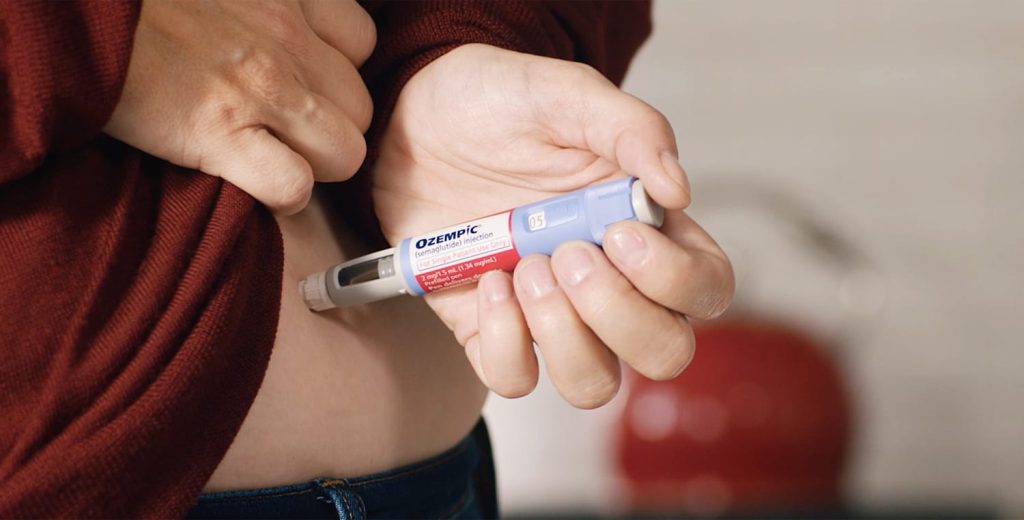
In our comprehensive exploration of Ozempic, we delve into users’ experiences and insights regarding this medication, focusing on its uses, access, and alternatives. Ozempic, also known as semaglutide, is a medication commonly prescribed to manage type 2 diabetes. However, individuals may wonder about the possibility of purchasing Ozempic from Mexico and the considerations involved in doing so. What is Ozempic? Ozempic is a prescription medication belonging to the class of glucagon-like peptide-1 receptor agonists (GLP-1 RAs). It works by mimicking the action of a hormone in the body that helps regulate blood sugar levels. Ozempic is typically used in conjunction with diet and exercise to improve glycemic control in adults with type 2 diabetes. The Rise of Ozempic Ozempic has gained popularity in recent years due to its efficacy in controlling blood sugar levels and its convenient once-weekly dosing regimen. Many individuals have reported positive experiences with Ozempic, citing improvements in blood sugar management and weight loss. Ozempic Access Getting a Prescription In most countries, including Mexico, Ozempic is available by prescription only. To obtain a prescription for Ozempic, individuals should consult their healthcare provider, who will assess their medical history and determine if Ozempic is an appropriate treatment option. Footing the Cost The cost of Ozempic can vary depending on factors such as dosage strength, quantity, and pharmacy location. In Mexico, individuals may be able to purchase Ozempic from local pharmacies, but the cost may still be significant. Some individuals may opt to explore alternative options, such as purchasing Ozempic from international sources. Drug Shortage It’s important to note that there may be instances of drug shortages or availability issues with Ozempic, both in Mexico and other countries. Individuals should consult with their healthcare provider or pharmacist for information on current availability and potential alternatives. Buying Ozempic From Mexico Logistics While it may be possible to purchase Ozempic from Mexico, there are several logistical considerations to keep in mind. Individuals should ensure that they are purchasing Ozempic from a reputable pharmacy and that the medication meets quality and safety standards. Additional Words of Caution It’s essential for individuals to exercise caution when purchasing medications from international sources, including Mexico. There may be risks associated with counterfeit or substandard medications, as well as legal implications for importing prescription drugs into certain countries. Purchasing Ozempic from Canada: A Viable Alternative Why Consider Canadian Pharmacies for Ozempic? Canadian pharmacies are known for their high standards of quality and safety. Medications purchased from licensed Canadian pharmacies are regulated by health authorities and undergo stringent quality control measures. Regulated Medications Ozempic obtained from Canadian pharmacies is subjected to the same rigorous regulatory standards as medications sold domestically. This provides individuals with assurance regarding the authenticity and quality of the medication. Ease of Access Many Canadian pharmacies offer convenient online ordering and international shipping options, making it easy for individuals to purchase Ozempic from Canada. Legal Considerations Importing prescription medications for personal use from Canada may be subject to certain legal considerations. Individuals should familiarize themselves with the regulations and requirements governing the importation of medications into their country. How to Safely Purchase Ozempic from Canada Obtain a Valid Prescription Before purchasing Ozempic from Canada, individuals should obtain a valid prescription from their healthcare provider. This ensures that the medication is being used appropriately and under medical supervision. Understand the Shipping Process Individuals should familiarize themselves with the shipping process and any associated costs or requirements. It’s important to ensure that the medication is shipped securely and in compliance with applicable regulations. Conclusion In conclusion, while purchasing Ozempic from Mexico may be an option for some individuals, it’s essential to approach it with caution and consider potential risks and logistical challenges. Canadian pharmacies offer a regulated and reliable alternative for obtaining Ozempic, providing individuals with access to quality medication and peace of mind. Ultimately, individuals should consult with their healthcare provider to determine the most suitable and safe option for obtaining Ozempic.
What You Need to Know Before Buying Insulin from Canada

In this comprehensive blog post, we delve into the experiences and insights of users regarding insulin, focusing on its uses, side effects, dosage, and alternatives. If you’re considering buying insulin from Canada, here’s what you need to know to make an informed decision. Why Americans buy insulin from Canada Many Americans turn to Canada to purchase insulin due to significantly lower prices compared to the United States. High costs of insulin in the U.S. have led individuals to explore more affordable options abroad. Is it legal to buy insulin in Canada? Yes, it is legal for Americans to buy insulin from Canada for personal use. However, it’s essential to ensure that you’re purchasing from reputable sources and following all regulations regarding importation and usage. How to safely order insulin online? When ordering insulin online from Canada or any other country, it’s crucial to prioritize safety. Only purchase from licensed pharmacies or reputable online retailers. Verify the authenticity of the product and check for proper packaging and labeling. Additionally, consult with your healthcare provider to ensure that the insulin you’re purchasing is suitable for your needs. Why is insulin cheaper in Canada? Insulin prices in Canada are lower due to various factors, including government regulations on drug pricing and negotiation of drug prices with manufacturers. These regulations help keep medication costs affordable for Canadians and make it an attractive option for Americans seeking more affordable insulin. Conclusion Before buying insulin from Canada, it’s essential to research and understand the legalities, safety precautions, and reasons behind its affordability. Consulting with healthcare professionals and purchasing from reputable sources can help ensure the quality and effectiveness of the insulin you receive. Moving forward, let’s discuss the potential side effects associated with insulin use and how to navigate them effectively.
Understanding Valsartan: Uses, Side Effects, and Alternatives
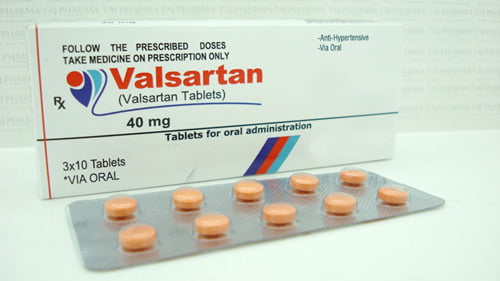
In our comprehensive blog post on Valsartan, we delve into users’ experiences and insights regarding this medication, focusing on its uses, side effects, dosage, and alternatives. Our goal is to provide accessible information that caters to all readers, including those unfamiliar with medical terminology, ensuring a thorough understanding of Valsartan’s role in managing various conditions, particularly for individuals with diabetes. Uses Valsartan is a medication primarily prescribed to manage conditions such as high blood pressure (hypertension) and heart failure. It belongs to a class of drugs known as angiotensin II receptor blockers (ARBs), which work by relaxing blood vessels, thereby lowering blood pressure and improving heart function. Understanding the uses of Valsartan is essential for individuals seeking effective treatment for these conditions. Side Effects While Valsartan can be effective in managing hypertension and heart failure, it’s essential to consider potential side effects. Users may experience common side effects such as dizziness, headache, and fatigue. Additionally, more serious side effects such as allergic reactions, swelling of the face, lips, or throat, and difficulty breathing may occur in rare cases. Understanding the potential side effects of Valsartan allows individuals to make informed decisions about their medication regimen. Dosage The dosage of Valsartan varies depending on individual factors such as the severity of the condition being treated and the patient’s response to the medication. Healthcare providers may prescribe Valsartan at different strengths, such as 80 mg or 160 mg, and adjust the dosage as needed to achieve optimal blood pressure control or heart failure management. Adhering to the prescribed dosage is crucial for maximizing the medication’s effectiveness while minimizing the risk of side effects. Alternatives For individuals concerned about Valsartan’s side effects or seeking alternative options, discussing with healthcare providers is essential. Alternative medications such as other ARBs or different classes of antihypertensive drugs may be considered based on individual needs and medical history. Lifestyle modifications such as diet, exercise, and stress management techniques can also complement medication therapy for managing hypertension and heart failure effectively. In conclusion, our review of Valsartan provides valuable insights into its uses, side effects, dosage, and alternatives. By presenting comprehensive and accessible information, we aim to empower readers to make informed decisions about their healthcare journey, ensuring effective management of hypertension and heart failure, particularly for individuals with diabetes.
Revolutionizing Diabetes Management: The Smart Insulin Pens
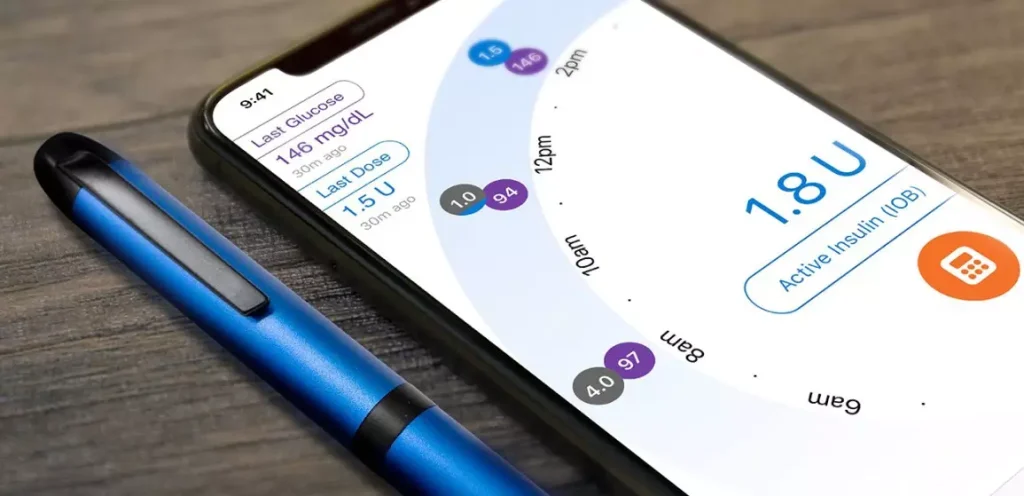
What is smart insulin? In the rapidly evolving landscape of healthcare technology, has taken a bold step forward with its groundbreaking Smart Insulin pens. These pens, armed with Bluetooth and USB connectivity, usher in a new era of convenience and precision in insulin dosing for individuals managing diabetes. One of the standout features of these Smart Insulin pens is their seamless integration with modern digital platforms. Through Bluetooth or USB connectivity, users can effortlessly track their insulin doses using a dedicated smartphone app or a companion device. This not only provides users with real-time insights into their insulin regimen but also simplifies the entire diabetes management process. The user-friendly interface of the smartphone app offers a range of functionalities, allowing users to monitor their insulin usage with ease. From tracking daily doses to setting reminders for medication schedules, the app serves as a comprehensive tool for individuals navigating the challenges of diabetes. Its intuitive design ensures that even those unfamiliar with complex medical technologies can navigate and leverage its features effectively. Ease of use is a paramount consideration for individuals managing diabetes, and the Smart Insulin pens address this concern with finesse. The pens boast a user-friendly design, ensuring a straightforward and hassle-free insulin administration process. Whether you’re a tech-savvy individual or someone less accustomed to digital devices, these pens cater to users of varying technological comfort levels. Accuracy is a critical aspect of any medical device, and Smart Insulin pens uphold the highest standards in dose tracking precision. Users can trust that their insulin doses are measured with utmost accuracy, providing peace of mind in an otherwise complex and demanding health management routine. The technology within these pens ensures that every dose is administered reliably, contributing to better overall diabetes control. One notable advantage of these Smart Insulin pens is their compatibility with popular diabetes management apps. This integration opens up a world of possibilities for users, allowing them to consolidate their health data in one central location. From glucose levels to insulin dosage history, these pens ensure that users have a comprehensive overview of their health status at their fingertips. As user testimonials pour in, a common thread among reviews is the enhanced sense of empowerment that comes with using these Smart Insulin pens. Users express their appreciation for the newfound control over their diabetes management, facilitated by the intuitive technology and connectivity features. The ability to seamlessly incorporate insulin dosing into their daily routines without sacrificing accuracy is a game-changer for many. Smart Insulin Pens has curated an online haven for these cutting-edge products, providing a platform for individuals seeking advanced solutions for diabetes management. The website showcases the Smart Insulin pens along with detailed information about their features, benefits, and user testimonials. Navigating the website is an informative journey, guiding users through the various aspects of these innovative devices in a clear and concise manner. In conclusion, Smart Insulin pens represent a paradigm shift in the way individuals manage diabetes. The amalgamation of user-friendly design, precise dose tracking, and seamless digital integration sets these pens apart in the realm of healthcare technology. As we delve deeper into the era of smart healthcare solutions, these pens stand at the forefront, promising a brighter and more manageable future for those navigating the complexities of diabetes. What brands are smart insulin pens? Connected Insulin Pens: Here are the “Smart Pen” Options Which insulin pen is best? The “best” insulin pen can vary depending on individual preferences, including factors like ease of use, dosage accuracy, cost, and specific features required. Some popular insulin pens on the market include: It’s essential to consult with a healthcare professional to determine which insulin pen best suits your needs; if you’re still not sure which one to choose, you can read our review of the best insulin pens.
